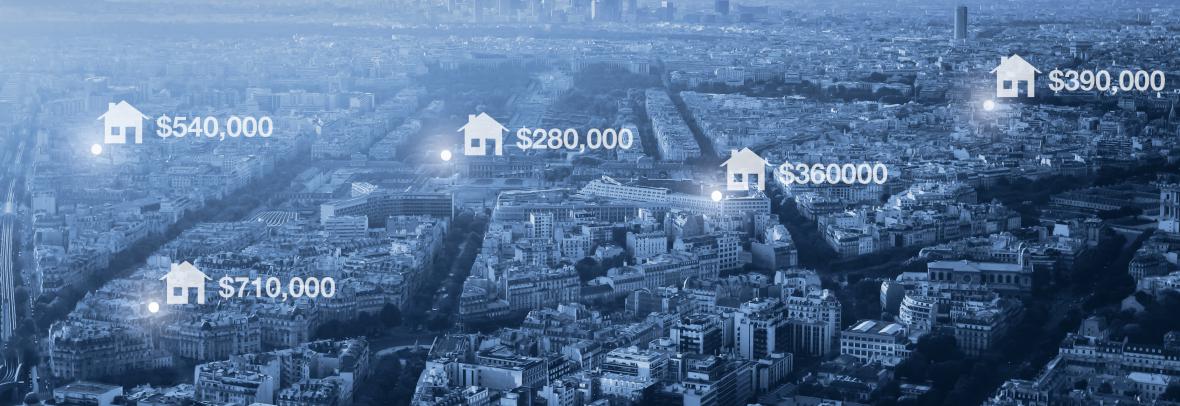
Metro-to-metro variations that peaked in spring 2022 continue this spring. In Miami, for example, home prices are up 10.9%; in San Francisco, they’re down 10.1%.
SEATTLE – A national home-price trend may provide a macro view of U.S. home price direction in general, but it means very little at the local level. Metro-to-metro variations in home-price growth reached a 13-year high in spring 2022, the tail end of the pandemic homebuying boom, and the variation has only dropped a small amount since then.
A historic price-growth gap between San Francisco and Miami illustrates the diversity of home prices. The San Francisco Bay area is losing homebuyers while South Florida is attracting them. As a result, San Francisco home prices are down 10.1% year-over-year, while Miami prices are up 10.9% – a near-record high.
That 21-percentage-point difference is near the biggest in over three decades (a peak of 23 points in August 2022), and it’s the largest gap among the major U.S. metros Redfin analyzed in a study.
The wide gap between San Francisco and Miami creates a starkly different homebuying experience in those parts of the country. Some Bay Area house hunters who have been priced out for the last few years, for example, may finally be able to break into the market – if they can afford today’s elevated mortgage rates and still-high prices and find a home for sale amid the supply shortage.
Meanwhile, many South Florida locals are finding it harder than ever to afford a home.
“The stark difference in home-price dynamics between the Bay Area and Miami may be a reflection of a long-term, pandemic-fueled shift in where people choose to live,” says Redfin Deputy Chief Economist Taylor Marr. “The fact that Miami prices are holding up well despite the national pullback in homebuying suggests the relative popularity of Florida is here to stay. Even though some employees are returning to offices at least a few days a week, the pandemic has given many Americans much more freedom on where they choose to live – and a lot of them are choosing places where shelling out $1.5 million for a run-of-the-mill home isn’t the norm.”
The Bay Area is still much more expensive than South Florida, but as San Francisco’s home prices fall and Miami’s rise, the amount of money a homebuyer saves by moving across the country has diminished. San Francisco’s median home-sale price was still 2.9 times higher than Miami’s in February (roughly $1.42 million versus $483,000), but that’s down from 4.4 times higher in February 2020.
After San Francisco and Miami, the metros with the next-biggest gaps are also expensive West Coast tech hubs paired with relatively affordable Sun Belt locales.
- Seattle-Miami: -9.4% year-over-year versus +10.9% year-over-year
- San Francisco-Tampa: -10.1% versus +7.7%
- Seattle-Tampa: -9.4% versus +7.7%
- San Francisco-Atlanta: -10.1% versus +6.6%
For homebuyers and sellers, the fact that prices vary widely from metro to metro means it’s more important than ever to focus on local trends.
“If you’re buying a home here in the D.C. area, don’t rely on real estate advice from your friend in the Midwest or your cousin in California,” says Washington, D.C., Redfin agent Steve Centrella. “Insights from other parts of the country can create confusion because they don’t necessarily reflect what’s happening on the ground in your neighborhood. For instance, demand for downtown condos is returning here as government employees return to the office, so buyers may encounter competition for desirable units. That may not be the case in other parts of the country.”
“Extreme moments in history lead to extreme swings in home prices,” adds Redfin Deputy Chief Economist Taylor Marr.
“During economic boom times … homebuying demand soars because many people have the means to buy both primary and vacation homes, and perhaps move from one part of the country to another,” she says. “That pushes prices up in certain places and grabs the attention of home flippers, who jump into the ring and push prices up even further. When there’s a recession like there was in 2009, or economic uncertainty and fears of a recession like in 2023, homebuyers quickly pull back and prices swing down in some areas.”
© 2023 Florida Realtors®
Go to Source
Author: kerrys



